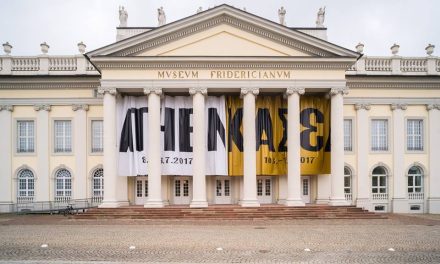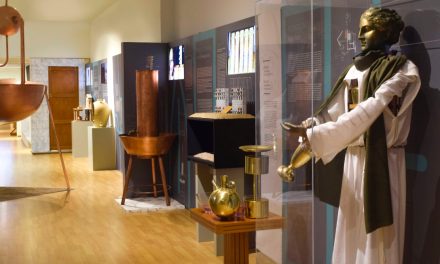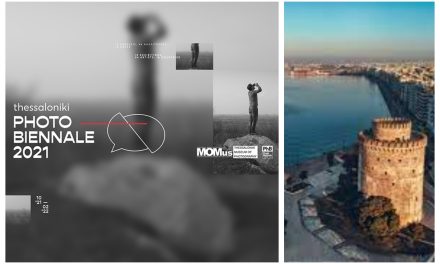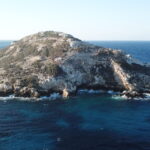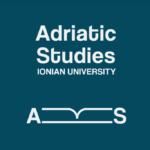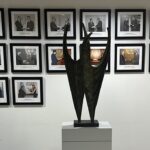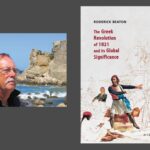The work of Greek sculptor Frosso Efthymiadi-Menegaki, entitled Iketides (“The Suppliants”) (1958), was presented at a high-level event held at the United Nations Headquarters in New York on February 24, 2025. The event marked the beginning of Greece’s term on the United Nations Security Council for the period 2025–2026, which started on January 1, 2025. The sculpture is on display at the Visitors’ Lobby – Poseidon area of the United Nations Headquarters and is part of the collection of the National Gallery – Alexandros Soutsos Museum (cover photo). It is being presented for the first time in the United States.
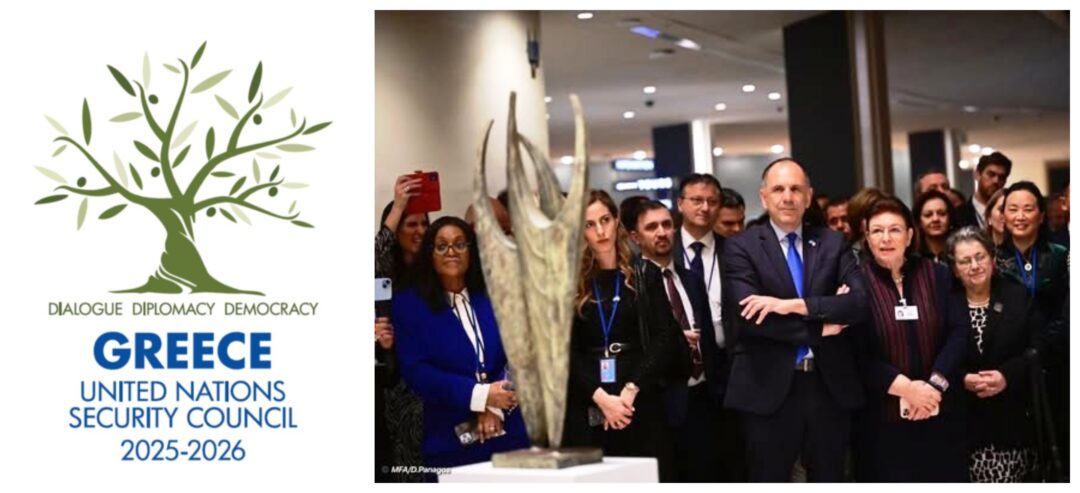
The event was hosted by the Minister of Foreign Affairs, Mr. George Gerapetritis, who officially announced the beginning of Greece’s term on the United Nations Security Council. It was attended by a large number of high-ranking UN officials, Permanent Representatives, and other representatives of member states. Also present were the Minister of Culture, Lina Mendoni, and the Director of the National Gallery – Alexandros Soutsos Museum, Syrago Tsiara.

Greece was elected, on June 6 2024, as a non-permanent member of the United Nations Security Council for the 2025-2026 term with the support of 182 states. This marks the third time Greece will hold a seat on the Security Council, following previous terms in 1952-1953 and 2005-2006. Three Greek words of universal meaning, starting with the letter D, will guide Greece’s term on the United Nations Security Council: Dialogue: the act of exchanging reasonable arguments, Diplomacy: rooted in the Greek word for two, diplomacy is in essence the dialogue between two parts, and Democracy: it literally means power of the people. (https://greeceforunsc.mfa.gr/).
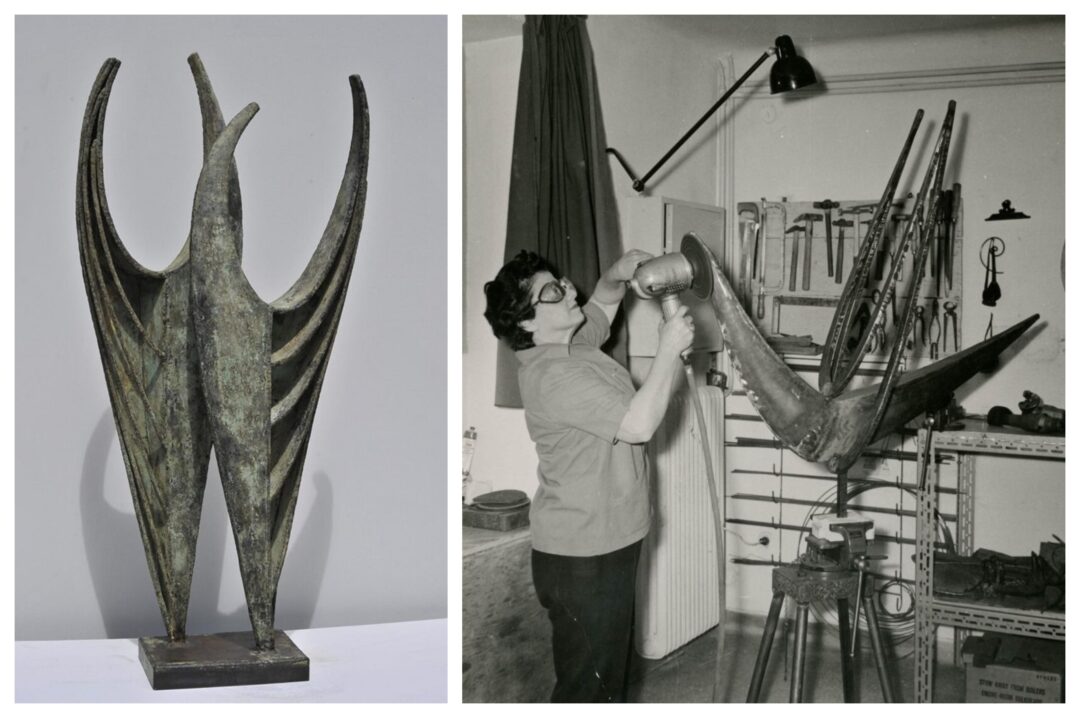
Frosso Efthymiadi-Menegaki , Supplicants, (1958), Hammered iron, 92 x 42 x 16 cm, Athens National Gallery (left), Frosso Efthymiadi working at “Bird”, photograph from her personal archive (Source: Athens National Gallery) (right)
Frosso Efthymiadi-Menegaki (Istanbul, 1911 – Athens, 1995) moved to Athens with her family in 1922. From 1930 to 1933, she studied pottery at the Vienna Arts and Crafts School under Michael Powolny and Robert Obsieger. Upon returning to Athens in 1933, she visited regions where ancient Greek potters worked, collecting a wide variety of clay types. In 1945, she went to Paris to work with Marcel Gimond. Between 1947 and 1949, she lived in Argentina, where she studied Inca and Indo art and culture. In June 1949, she returned to Greece. From 1953 to 1967, she traveled once again to America, as well as Egypt, Japan, India, Thailand, Bali, China, Cambodia, Java, Iraq, Nepal, and Iran. In 1974, the Academy of Athens honored her for her work, and in 1980, she became the first woman nominated as an Academy member.
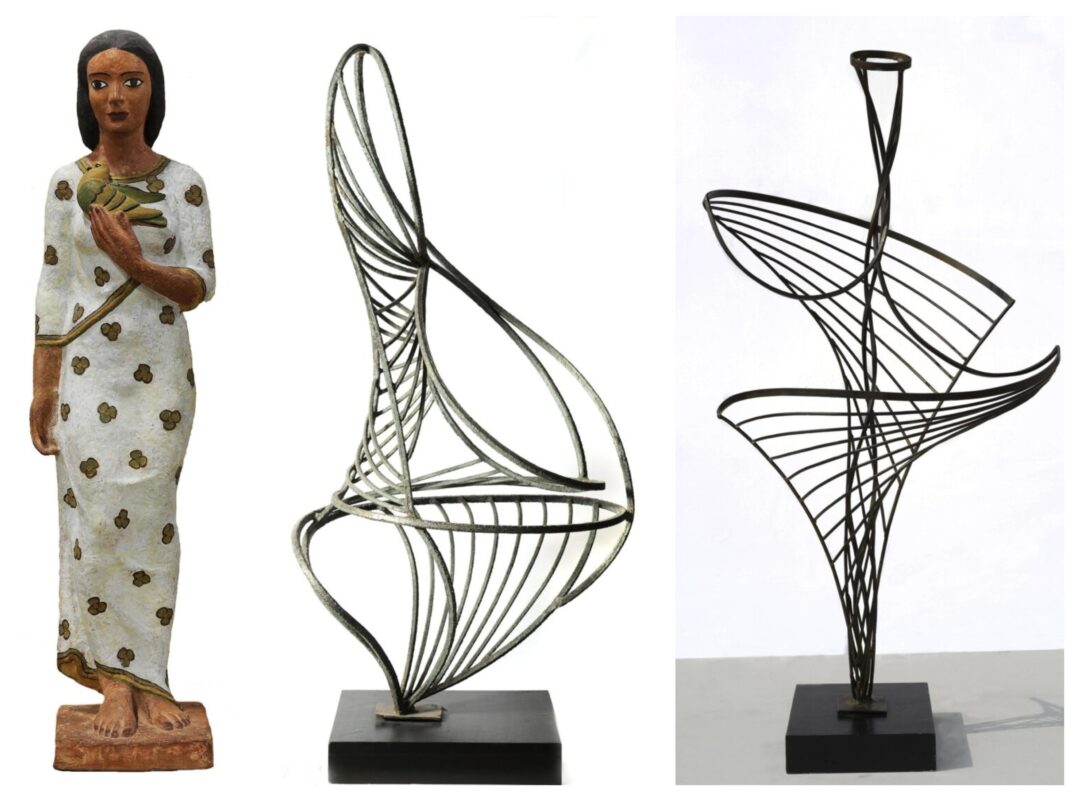
Frosso Efthymiadi-Menegaki, Girl with Dove, (1951), Painted terracotta, 82 x 23,5 x 17,5 cm (left), Nymph, (1960), Hammered brass, 138 x 67 x 43,6 cm (middle), Sprite, (1960), Hammered brass, 140 x 82 x 58 cm (right), Athens National Gallery
Until around the mid-1950s, Frosso Efthymiadi worked exclusively with clay, creating busts, full figures, vases, figurines, and, above all, a substantial number of animal sculptures. In fact, she is considered the first sculptor in Greece to pursue animal sculpture. In 1955, she shifted to working with metal, simultaneously abandoning her realistic style and adopting a freer approach. Using electric or oxyacetylene welding to join bronze or iron plates and rods, which she forged herself, she created abstract compositions within the same thematic field, either static or in motion, in which the void plays a prominent role.
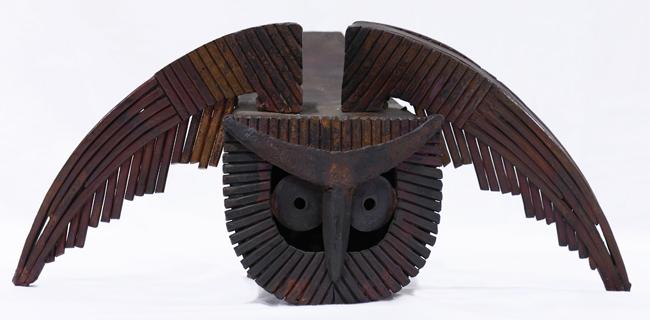
Frosso Efthymiadi-Menegaki, Owl, (after 1959), Hammered copper, 18 x 42 x 25 cm, Athens National Gallery
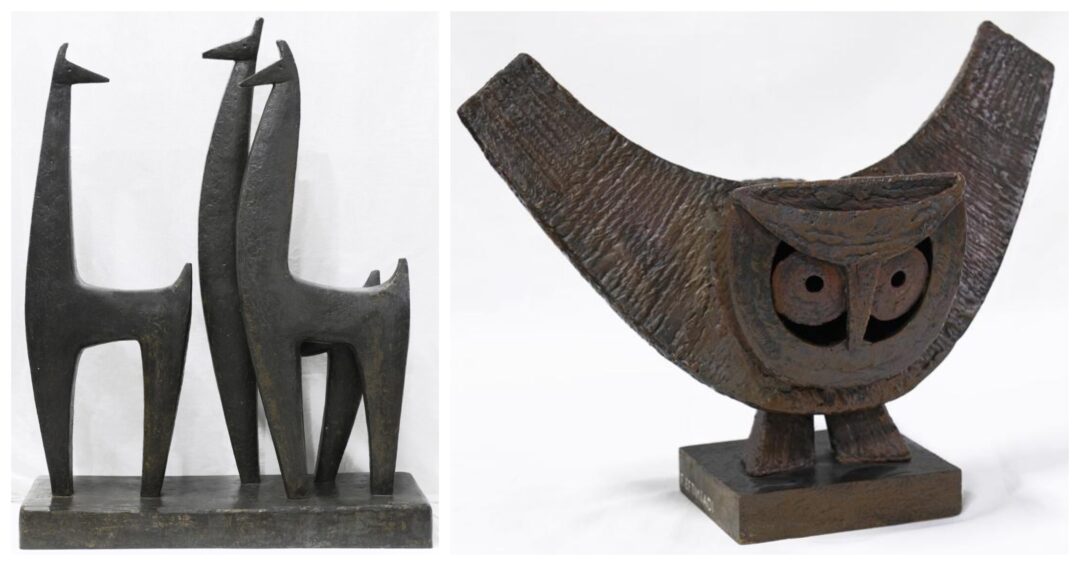
Frosso Efthymiadi-Menegaki, Animals of the Andes, (1954), Hammered iron, 120 x 98 x 34 cm (left), Owl, (before 1959), Hammered iron and welded copper, 26 x 40,5 x 27 cm (right), Athens National Gallery
Her work has been featured in solo exhibitions in Greece and around the world. She also participated in group and international events, including Panhellenic exhibitions, the 1955 International Ceramics Fair in Cannes, contemporary sculpture exhibitions at the Musée Rodin in 1956 and 1961, the 1965 International Sculpture Panathenaia exhibition in Athens, and the New York World’s Fair in the same year. Additionally, she exhibited at the Paris Salons de la Jeune Sculpture in 1968 and 1969, the 1959 São Paulo Biennale, where she won first prize, and the 1965 Alexandria Biennale. (Source: Athens National Gallery)
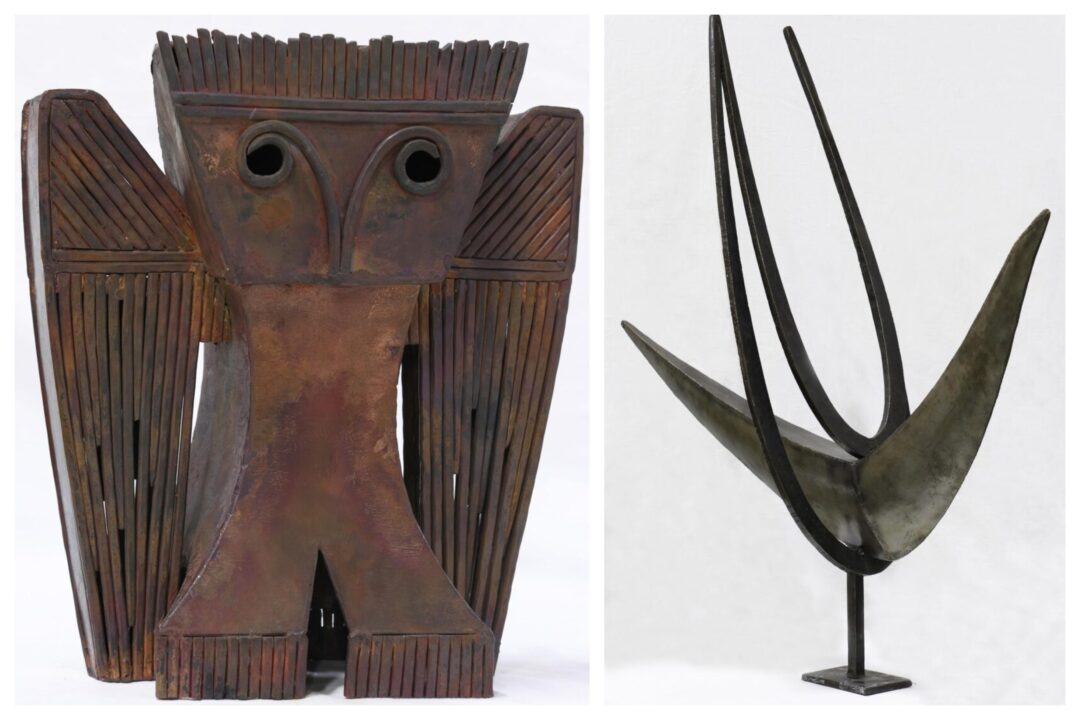
Frosso Efthymiadi-Menegaki, Minerva, (1961), Hammered copper, 36 x 33 x 16 cm (left), Bird, (c. 1959), Hammered brass, 126,5 x 113,5 x 38 cm (right), Athens National Gallery
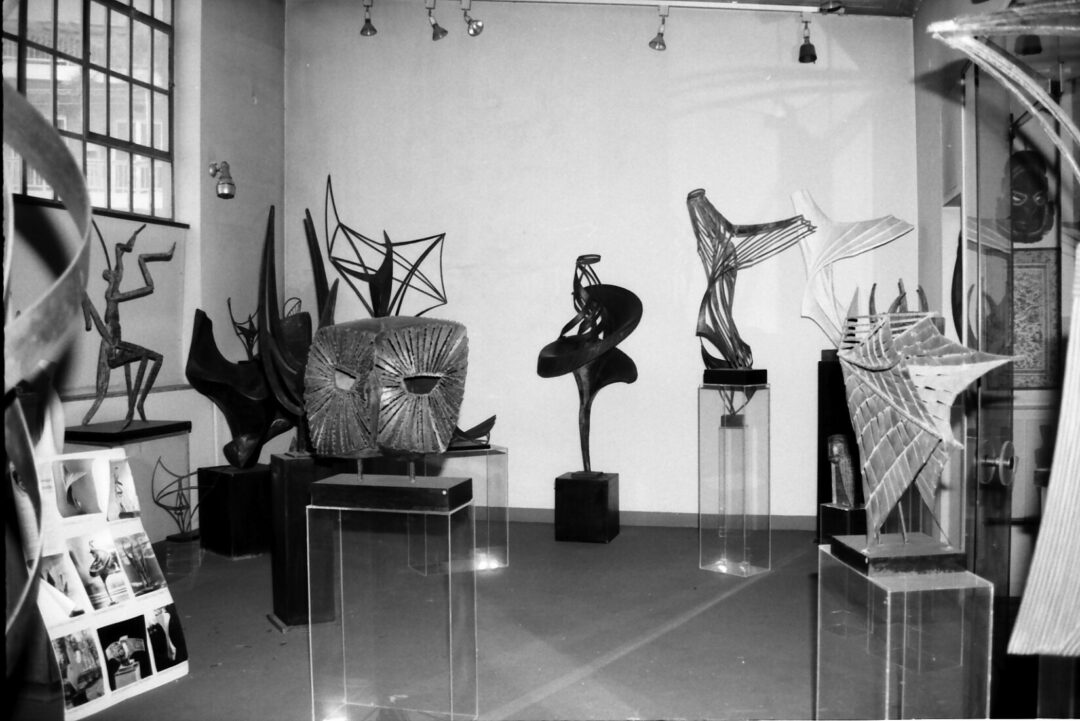
Display at the sculptress’s home studio (Source: Athens National Gallery)
Frosso Eftymiadi’s sculptural work “Supplicants”, presented at the United Nations Headquarters in New York, draws its inspiration from Aeschylus’ tragedy and expresses timeless and universal issues, such as resistance to injustice, recognition of human dignity and the protection of vulnerable individuals.
The Director of the National Gallery, Syrago Tsiara, while presenting the sculpture to the public, spoke about the history and significance of the “Supplicants”, highlighting the power of the work that manages to convey, through the artist’s impeccable technique, the deepest meanings of ancient Greek tragedy, while simultaneously highlighting the timelessness and influence of Greek art from antiquity to modern times (Source: National Gallery).
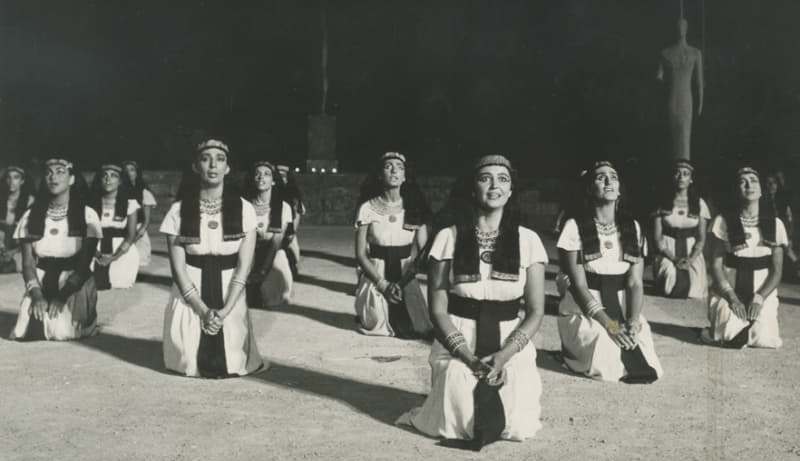
The suppliants (1964), dir. A. Solomos, photo by: D. Harisiadis, Source: Photographic archive of the National Theater of Greece
The play (the first and only surviving play from Aeschylus’ Danaid Tetralogy) was probably first performed a few years before the Oresteia, which was brought out in 458 BC. It features a collective female character: the Chorus of the fifty Danaïdes who, together with their father Danaus, abandon Libya and Egypt and seek asylum in the city of Argos…The Danaid Suppliants speak of the needs that lead people to uproot themselves from their land, the fierce fate of the refugee, the value of justice, the principles of democracy. Above all, they speak of the Woman’s struggle against the Man who seeks to force himself on her. (Source: Athens Epidaurus Festival)
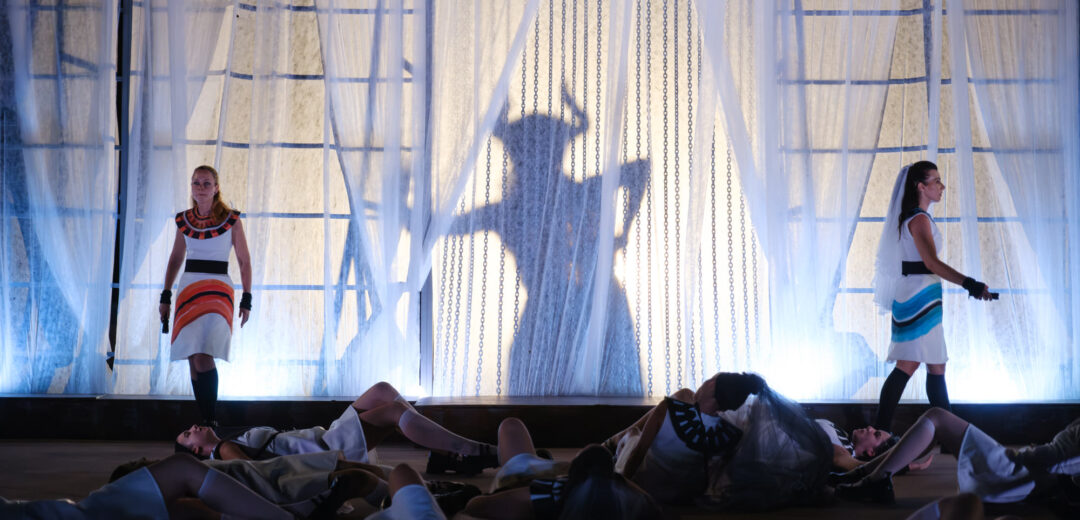
The suppliants (2024), Greek Art Theatre Karolos Koun – Neos Kosmos Theatre, dir. Marianna Kalbari, Athens Epidaurus Festival
Read also:
Greece at the United Nations Security Council for 2025-2026
Greek Pavilion at the Venice Biennale: A Laboratory of Dilemmas
I.A.
TAGS: ARTS | CULTURAL DIPLOMACY | CULTURE | SCULPTURE | UN


